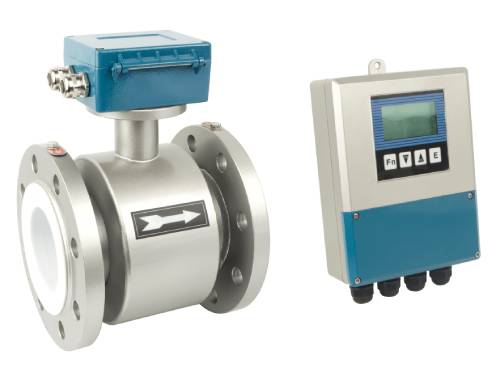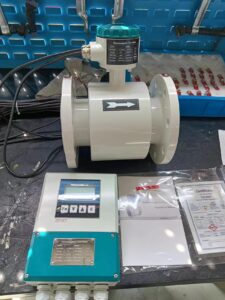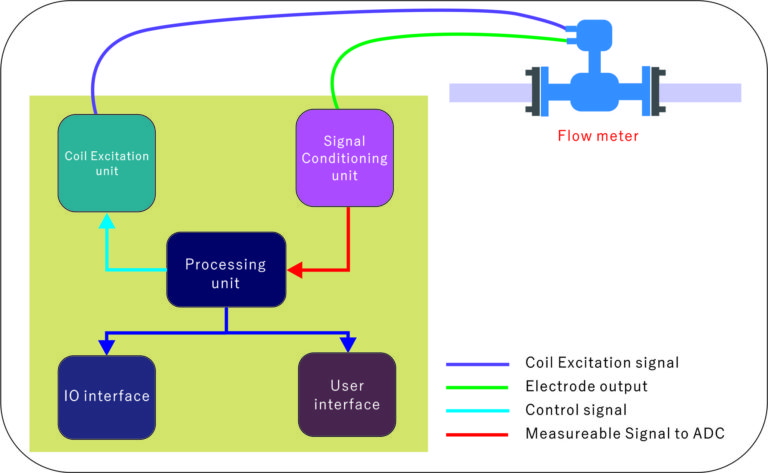Electromagnetic flow meters are widely used industrial devices for accurate flow measurement. Their performance and long-term stability are highly dependent on proper installation. This article explains the installation requirements, the reasons for these requirements, and the consequences of improper installation.

1. Installation Requirements for Electromagnetic Flow Meters
1.1 Pipeline Position Requirements
Straight Pipe Length:
- Upstream: A straight pipe length of at least 5 times the pipe diameter (5D) is required.
- Downstream: A straight pipe length of at least 3 times the pipe diameter (3D) is necessary.
These requirements ensure a uniform flow profile before the fluid enters the flow meter.
Avoid High-Vibration Locations:
- Install the flow meter in an area with minimal vibration to reduce mechanical interference.
Minimize Electromagnetic Interference:
- Avoid placing the flow meter near strong electromagnetic sources such as large motors, variable frequency drives, or high-voltage cables, as these may disrupt the device’s accuracy.

1.2 Ensure Full Pipe Flow
The installation position must guarantee that the pipe remains fully filled with the fluid:
- Horizontal Installation: Install the flow meter at the lowest point of a horizontal pipe.
- Vertical Installation: Ensure the flow direction is upward to avoid bubbles or an empty pipe during measurement.
Improper positioning, such as tilting or at high points, may introduce air bubbles or incomplete coverage of the electrodes.
1.3 Grounding Requirements
- Proper Grounding:
- The flow meter’s grounding resistance should be less than 10 ohms.
- Use a dedicated ground point to avoid interference caused by shared grounding with other equipment.
1.4 Fluid Dynamics
Avoid Strong Turbulence or Swirls:
- Ensure a laminar and uniform flow at the sensor location by adhering to the straight pipe length requirements.
- Poor fluid dynamics can cause erratic signals and inaccurate measurements.
Protect the Flow Sensor:
- Incorrect positioning or fluid containing excessive particles may cause wear and tear on the electrodes.

2. Reasons for Adhering to Installation Guidelines
Ensure Measurement Accuracy:
- The electromagnetic flow meter operates on Faraday’s law of electromagnetic induction, which requires a uniform velocity profile in the flow. Non-uniform or turbulent flow affects the stability of the induced voltage, leading to incorrect readings.
Prevent Interference:
- Strong electromagnetic fields or improper grounding introduce noise, affecting the sensor’s ability to detect the weak voltage signals generated by the fluid.
Extend Equipment Lifespan:
- Persistent exposure to bubbles, particles, or vibrations can damage the electrodes, leading to more frequent maintenance and reduced equipment lifespan.

3. Consequences of Improper Installation
Measurement Errors:
- Insufficient Straight Pipe Length:
- Turbulent or uneven flow causes fluctuating voltage readings, leading to deviations from actual flow values.
- Empty or Partially Filled Pipe:
- Incomplete electrode coverage results in distorted or no readings.
- Vibration or Air Bubble Interference:
- Produces unstable outputs and erratic data.
- Insufficient Straight Pipe Length:
Device Malfunction:
- Poor Grounding:
- Allows external electromagnetic noise to infiltrate the device’s circuitry, causing false alarms or permanent damage.
- Improper Installation Position:
- Prolonged exposure to abrasive particles or frequent bubble impact leads to electrode wear and increased repair costs.
- Poor Grounding:
Operational Downtime:
- Improper installation may lead to interruptions in the production process, compromising the stability and efficiency of industrial operations.

4. Conclusion
The installation requirements for electromagnetic flow meters stem from their operating principles and design characteristics. Adhering to these guidelines ensures:
- Accurate and reliable measurements.
- Long-term operational stability.
- Extended equipment durability.
Neglecting proper installation may result in significant risks, including measurement deviations, equipment failure, and production losses. To mitigate these risks, it is essential to thoroughly evaluate site conditions and follow installation standards during setup.
